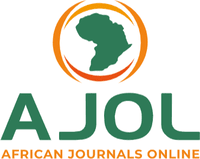Assessment of Some Heavy Metals in Soil Samples Around Maiganga Coal Mining Area, Akko Local Government Gombe State, Nigeria
DOI:
https://doi.org/10.56892/bima.v9i1B.1154Keywords:
Heavy metals, Coal, Maiganga, Pollution,Abstract
Soil contamination by heavy metals is a critical environmental concern, especially in mining areas where anthropogenic activities contribute significantly to pollution. This study assesses the concentration of heavy metals—Zinc (Zn), Copper (Cu), Chromium (Cr), Cadmium (Cd), Iron (Fe), Lead (Pb), and Nickel (Ni)—in soil samples from the Maiganga coal mining area, Akko Local Government, Gombe State, Nigeria. Soil samples were collected from three different locations (near Maiganga factory, Amtawalam junction, and Payi village) and analyzed using Atomic Absorption Spectroscopy (AAS) after acid digestion. Additionally, the pH and conductivity of the soil samples were measured to assess their physicochemical properties. The results revealed that soil pH ranged from 7.01 to 7.24, indicating a neutral to slightly alkaline nature. Conductivity values varied, with the highest recorded at 241 µS/cm and the lowest at 174 µS/cm. Among the heavy metals analyzed, nickel (Ni) showed the highest concentration, significantly exceeding permissible limits in some samples, particularly in soil Amtawalam junction (29.5233 mg/kg). Zinc, copper, chromium, and cadmium were detected in varying concentrations, while lead was found at negligible levels. These findings indicate potential environmental and health risks, as heavy metals can accumulate in plants and enter the food chain. The study highlights the need for continuous monitoring of heavy metal contamination in the Maiganga mining area to mitigate environmental hazards and ensure sustainable land use.





